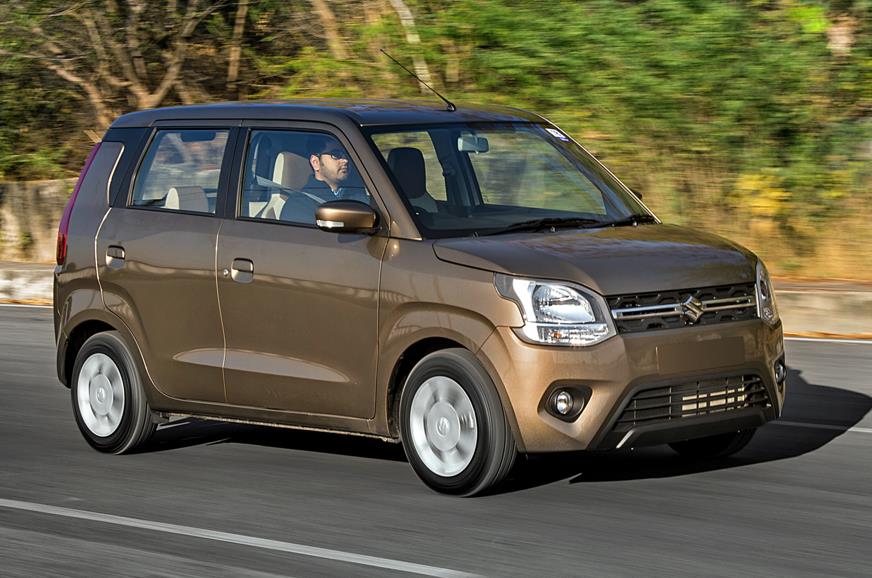The Japanese automotive industry has always been specific in so many ways, but nothing comes close to how they regulate the Kei car segment, to which the Suzuki Wagon R belongs.
There are stringent guidelines for producing Kei cars, including their size, volume, engine capacity, etc. Suzuki tried to spread this formula to other parts of the world, but without much success.
The Australian version of the Wagon R was offered for just a couple of years. Despite the various adaptations to the market's specifics (e.g., bigger dimensions and a bigger engine), sales weren't all that good.
However, from today's perspective, this could be a great used car for a specific group of drivers. Why do I say that? This model proved itself pretty capable and reliable, with excellent fuel economy to boot, even by today's standards.
Suzuki Wagon R for the JDM
Suzuki launched the Wagon R in 1993 for the Japanese domestic market. The company's goal was to create a small vehicle that met Kei car standards in terms of size and engine capacity but also offered a decent amount of passenger space, which the reason for the Wagon R’s van body layout.
The first generation was sold in Japan until 1998. It was also available in two re-branded versions: Mazda AZ Wagon and Autozam AZ Wagon. In both cases, the overall design and features were the same with the Suzuki model.
The new Kei car was well received, with good initial sales numbers that eventually peaked in the first decade of 2000. Even today, the Wagon R remains as one of Japan's most popular Kei cars and is currently in its sixth generation.
The initial success of the Wagon R in the domestic market encouraged Suzuki management to try their luck in other parts of the world. Eventually, the tiny van would be offered in Europe and Australia.
However, its sales Down Under would only run for a couple of years in the late 1990s.
Suzuki Wagon R+
The Kei car class is one of the many specifics in Japan and was never accepted very well by drivers from other parts of the world. Therefore, Suzuki engineers decided to make some modifications to make this model more appropriate for markets like Europe and Australia.
There was no longer a need to stick with the strict standards of the Kei car class, so models for the international market came with notable increases in various aspects. Not only were the foreign market versions bigger in size, but they also came with a bigger engine.
So, the Australian version was wider and longer, and featured a longer wheelbase, which provided more passenger space. Logically, this version was named Suzuki Wagon R Plus or Wagon R+, depending on the market. Other than the size and the engine, the mechanical aspect of the vehicle remained largely the same, whether it was about the chassis or other car components.
Speaking of the suspension setup, this tiny van featured a pretty basic setup. The front axle was equipped with a typical McPherson strut, lower independent arms, coil springs and an anti-roll bar, while the rear featured a solid axle with coil springs. For the brakes, the front wheels used ventilated discs, while the rear end came with a couple of good-old drums.
The Wagon R+ was offered in two grades, GA and GL. The base GA was equipped with goodies like air conditioning and driver airbag, while the GL offered upgrades like central locking, power steering, power windows, roof racks etc.
Dimensions
The Australian Wagon R+ was 115mm longer than the JDM version, 180mm wider, with a 75mm longer wheelbase. It was also slightly higher, with a total height of 1,705mm. With larger dimensions and a bigger engine, the Australian version weighed around 850kg.
Suzuki Wagon R+ Dimensions:
- Wheelbase: 2335mm
- Overall height: 1705mm
- Overall length: 3410mm
- Overall width: 1575mm
- Kerb weight: 850kg
- Turning circle: 9.6m
- Rear track: 1355mm
- Front track: 1360mm
Engine
As there were no restrictions regarding engine capacity for the export model, Suzuki engineers decided to install a bigger engine in the Australian and European versions.
Instead of a small 660cc three-cylinder unit, available both in naturally aspirated and turbocharged variants, the company picked a bigger 1.0-litre four-cylinder naturally aspirated engine. This unit was quieter and smoother and also provided much-needed additional torque.
In Europe, the Suzuki Wagon R+ was offered with a bigger 1.2-litre unit, which wasn't offered Down Under. Also, while the JDM version was available in manual and automatic transmissions, Suzuki only offered 5-speed manual for the Australian model.
The overall performance was pretty decent. With 81Nm of torque and 48kW of max power, the Wagon R+ turned out to be very durable and reliable. Also, the average fuel consumption of 5.4L/100km combined was pretty impressive back in the day. So, even today, if you look for a Suzuki Wagon R+ for sale, you will probably find it with a decent price tag on it because of these qualities.
Suzuki Wagon R+ Specs:
- Engine Capacity: 996cc
- Number of cylinders: 4cyl
- Fuel type: Regular unleaded petrol
- Forced Induction: -
- Max torque: 81Nm
- Max power: 48kW
- Transmission: 5-speed manual
- Fuel consumption: 5.4L/100km (combined)
- Fuel tank capacity: 42L
Did Suzuki stop making Suzuki Wagon R?
Unfortunately, the Suzuki Wagon R+ wasn't particularly popular in Australia, so the model was discontinued just a few years after its initial launch. On the other hand, the Japanese-market version is a true legend and one of the most popular Kei cars of all time. It remains in production, and we have seen six generations so far.
Do you want to sell your old Suzuki Wagon R+? You can advertise it for sale on our website and find more interested buyers. If you need replacement parts, send us a query, and we will find the best deals for you.
By Nebojsa Grmusa

